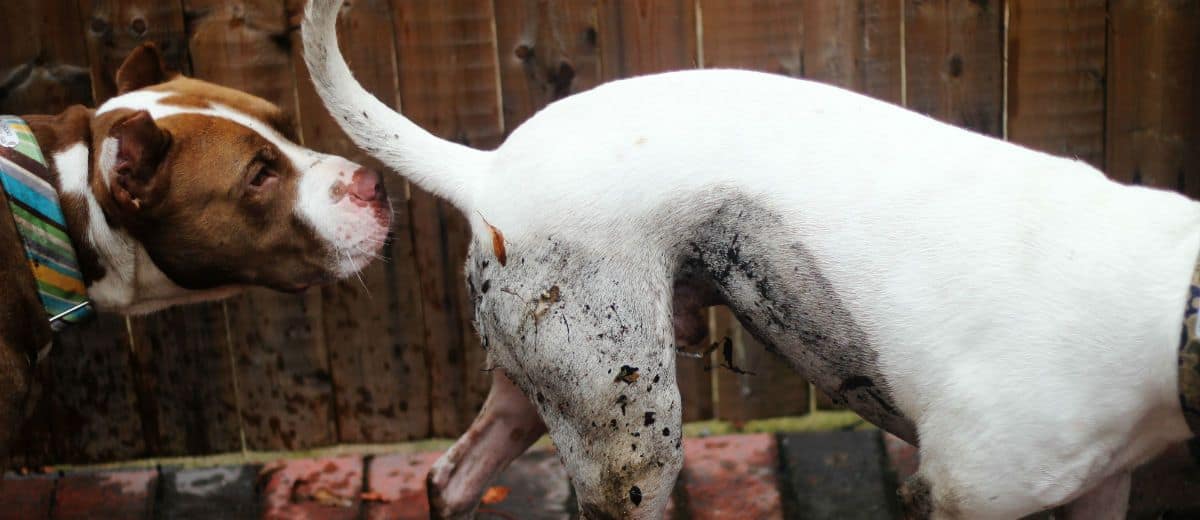You may have often wondered why dogs have a habit of sniffing each other’s rear ends when they meet. Well the answer has to do with the amazing number of olfactory receptors dogs possess. Since dogs have an extraordinary sense of smell they can learn a lot about each other via this odd greeting ritual. Basically, a dog can download and process a brief biography of another dog through its scent due to the anal sacs located on the sides of the pooch’s rear end.
The anal sacs consist of glands which secrete chemicals and these can tell a brief history of the animal such as its gender, diet, health, emotional state, and reproductive status. So unlike humans, who shake hands and ask questions to get to know each other, a dog can bypass this idle chit-chat with a quick sniff off the butt. Fortunately, no other odors interfere with the chemicals because dogs possess a secondary olfactory system and this enables the chemical information to go straight to the animal’s brain for processing.
Dogs also have other senses such as sight, touch, taste, and hearing, but their sense of smell is certainly their strong point. In fact, it’s estimated to be approximately 100,000 times stronger than a human’s as a dog has access to 150 million olfactory receptors and we have about 5 million. This is why dogs are so adept at sniffing out things such as explosives and illegal drugs at your local airport. It’s also estimated that 33 percent of a dog’s brain is used to identify odors while humans use just five percent for the same purpose.
Their sense of smell is enhanced by something known as Jacobsen’s organ which can be found in the animal’s nasal cavity and this is the secondary olfactory system we mentioned earlier. This organ is specifically designed for chemical communication only as its nerves lead directly to the animal’s brain and differ from the dog’s primary olfactory system. The system works so well that it enables dogs to detect substances which may not seem to have any odor at all.
By using this secondary system dogs can quickly identify pheromones and will know almost instantly if another dog is available for breeding. Puppies also use their sense of smell to detect their nursing mothers when it’s feeding time as they can tell which dog gave birth to them. Both olfactory systems work hand in hand to identify certain odors that neither the nose or Jacobsen’s organ could detect on its own. This is why dogs know if each other is in a happy or aggressive mood or if they’re ill or healthy and can even tell what their new friend likes to eat.
It just happens that the chemicals secreted by the animals happen to come from glands located near the rear end instead of some other part of the body. In addition, the chemical odor is unique to each and every dog and a quick sniff will let the animals know if they’ve ever met before. You could compare the chemical secretions of a dog to a human’s fingerprints in the sense that each of them are different. However, a dog can certainly learn a lot more from the chemical odors of another dog than we can from a set of fingerprints.

